This time I will show you how vue-cli makes cross-domain requests. What are the precautions for vue-cli to make cross-domain requests. The following is a practical case, let's take a look.
During front-end development, requests to the backendInterface often require cross-domain requests. To implement cross-domain requests with vue-cli, you only need to open config/index.js and modify the following content.
//例如要请求的接口url为http://172.3.2.1:8000/look/1
module.exports = {
dev:{
proxyTable:{
'/api':{
target: 'http://172.3.2.1:8000',
changeOrigin: true,
pathRewrite: {
'^/api': ''
}
}
}
}
}
At this time, enter /api/look/1 at the URL of the interface you want to request to achieve cross-domain requests.
If you open F12 at this time, you will find that the requested url is localhost:8080/api/look/1. This is actually a virtual request for data from the local, so that there will be no cross-domain problems.
Under normal circumstances, there is no problem with the above method. If the above method does not work, you can try writing like this:
//例如要请求的接口url为http://172.3.2.1:8000/look/1
module.exports = {
dev:{
proxyTable:{
'/look':{
target: 'http://172.3.2.1:8000',
changeOrigin: true,
pathRewrite: {
'^/look': '/look'
}
}
}
}
}
At this time, enter / at the url of the interface you want to request. Look/1 can implement cross-domain requests.
I believe you have mastered the method after reading the case in this article. For more exciting information, please pay attention to other related articles on the php Chinese website!
Recommended reading:
JS dynamically manipulates HTML tags
##Use JS to manipulate input text box content
The above is the detailed content of How vue-cli makes cross-domain requests. For more information, please follow other related articles on the PHP Chinese website!
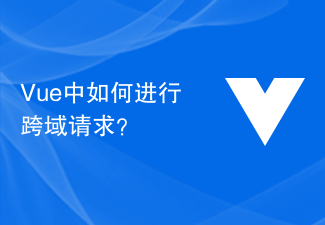 Vue 中如何进行跨域请求?Jun 10, 2023 pm 10:30 PM
Vue 中如何进行跨域请求?Jun 10, 2023 pm 10:30 PMVue是一种流行的JavaScript框架,用于构建现代化的Web应用程序。在使用Vue开发应用程序时,常常需要与不同的API交互,而这些API往往位于不同的服务器上。由于跨域安全策略的限制,当Vue应用程序在一个域名上运行时,它不能直接与另一个域名上的API进行通信。本文将介绍几种在Vue中进行跨域请求的方法。1.使用代理一种常见的跨域解决方案是使用代理
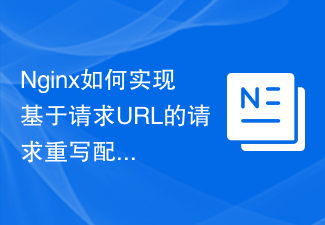 Nginx如何实现基于请求URL的请求重写配置Nov 08, 2023 pm 04:15 PM
Nginx如何实现基于请求URL的请求重写配置Nov 08, 2023 pm 04:15 PMNginx是一款轻量、高性能的Web服务器,它不仅支持反向代理、负载均衡等高级功能,还具备强大的请求重写能力。在实际的Web应用中,很多情况下需要对请求URL进行重写,以达到更好的用户体验和搜索引擎优化效果。本文将介绍Nginx如何实现基于请求URL的请求重写配置,包括具体的代码示例。重写语法在Nginx中,可以使用rewrite指令来进行请求重写。其基本语
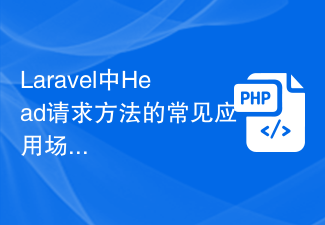 Laravel中Head请求方法的常见应用场景Mar 06, 2024 pm 09:33 PM
Laravel中Head请求方法的常见应用场景Mar 06, 2024 pm 09:33 PMLaravel中Head请求方法的常见应用场景在Laravel中,HTTP请求方法中的HEAD方法通常被用于获取资源的元数据而不获取实际的内容。HEAD请求和GET请求类似,但是不返回实际的响应主体内容,只返回响应头信息。这使得HEAD请求在一些特定的场景下非常有用,以下是一些常见的应用场景和相应的代码示例。验证链接的有效性使用HEAD请求方法可以用于验证链
 如何在Go中使用context实现请求重试策略Jul 21, 2023 pm 04:39 PM
如何在Go中使用context实现请求重试策略Jul 21, 2023 pm 04:39 PM如何在Go中使用context实现请求重试策略引言:在构建分布式系统中,网络请求不可避免地会遇到一些失败的情况。为了保证系统的可靠性和稳定性,我们通常会使用重试策略来处理这些失败的请求,以增加请求的成功率。在Go语言中,我们可以使用context包来实现请求的重试策略。本文将介绍如何在Go中使用context包来实现请求的重试策略,并附带代码示例。一、什么是
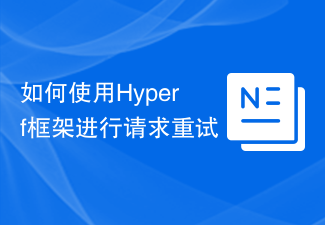 如何使用Hyperf框架进行请求重试Oct 24, 2023 am 09:37 AM
如何使用Hyperf框架进行请求重试Oct 24, 2023 am 09:37 AM如何使用Hyperf框架进行请求重试随着网络通信的不可预测性,我们在应用开发中常常会遇到请求失败的情况。为了保证应用的稳定性和健壮性,我们可以通过请求重试机制来增加请求的成功率。在Hyperf框架中,我们可以利用Hyperf提供的Retry组件来实现请求重试功能。本文将详细介绍如何在Hyperf框架中使用Retry组件,并给出具体的代码示例。首先,我们需要在
 如何在Go中使用context实现请求幂等性Jul 21, 2023 pm 12:37 PM
如何在Go中使用context实现请求幂等性Jul 21, 2023 pm 12:37 PM如何在Go中使用context实现请求幂等性介绍在Web开发中,幂等性是一个非常重要的概念。它确保一个请求的多次执行不会对系统产生不一致的副作用。在处理并发请求或者网络不稳定的情况下,使用幂等性可以保证请求的安全性和可靠性。Go语言中的context包提供了一种机制来处理这种情况。什么是幂等性简单来说,幂等性指的是对同一个操作的多次执行所产生的结果与一次执行
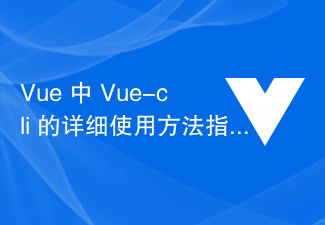 Vue 中 Vue-cli 的详细使用方法指南Jun 26, 2023 am 08:03 AM
Vue 中 Vue-cli 的详细使用方法指南Jun 26, 2023 am 08:03 AMVue是一种流行的前端框架,它的灵活性和易用性受到了许多开发者的青睐。为了更好的开发Vue应用程序,Vue团队开发了一个强大的工具-Vue-cli,使得开发Vue应用程序变得更加容易。本文将为您详细介绍Vue-cli的使用方法。一、安装Vue-cli使用Vue-cli之前,需要先安装它。首先,您需要确保已经安装了Node.js。然后,使用npm安装Vue-c
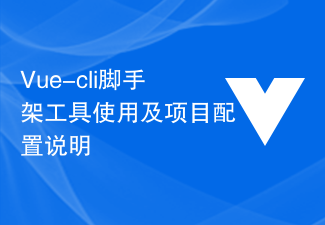 Vue-cli脚手架工具使用及项目配置说明Jun 09, 2023 pm 04:05 PM
Vue-cli脚手架工具使用及项目配置说明Jun 09, 2023 pm 04:05 PMVue-cli脚手架工具使用及项目配置说明随着前端技术的不断发展,前端框架也越来越受到开发者的关注。Vue.js作为前端框架的佼佼者,已经被广泛应用于各种Web应用的开发中。Vue-cli是Vue.js官方提供的一个基于命令行的脚手架,可以帮助开发者快速初始化Vue.js项目结构,让我们能够更专注于业务开发。本文将介绍Vue-cli的安装和


Hot AI Tools

Undresser.AI Undress
AI-powered app for creating realistic nude photos

AI Clothes Remover
Online AI tool for removing clothes from photos.

Undress AI Tool
Undress images for free

Clothoff.io
AI clothes remover

AI Hentai Generator
Generate AI Hentai for free.

Hot Article

Hot Tools

SublimeText3 English version
Recommended: Win version, supports code prompts!

Safe Exam Browser
Safe Exam Browser is a secure browser environment for taking online exams securely. This software turns any computer into a secure workstation. It controls access to any utility and prevents students from using unauthorized resources.

Zend Studio 13.0.1
Powerful PHP integrated development environment

DVWA
Damn Vulnerable Web App (DVWA) is a PHP/MySQL web application that is very vulnerable. Its main goals are to be an aid for security professionals to test their skills and tools in a legal environment, to help web developers better understand the process of securing web applications, and to help teachers/students teach/learn in a classroom environment Web application security. The goal of DVWA is to practice some of the most common web vulnerabilities through a simple and straightforward interface, with varying degrees of difficulty. Please note that this software

mPDF
mPDF is a PHP library that can generate PDF files from UTF-8 encoded HTML. The original author, Ian Back, wrote mPDF to output PDF files "on the fly" from his website and handle different languages. It is slower than original scripts like HTML2FPDF and produces larger files when using Unicode fonts, but supports CSS styles etc. and has a lot of enhancements. Supports almost all languages, including RTL (Arabic and Hebrew) and CJK (Chinese, Japanese and Korean). Supports nested block-level elements (such as P, DIV),






